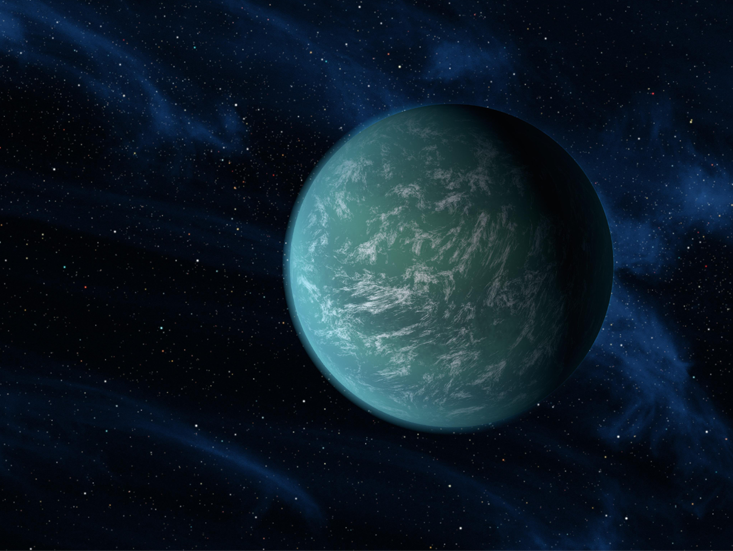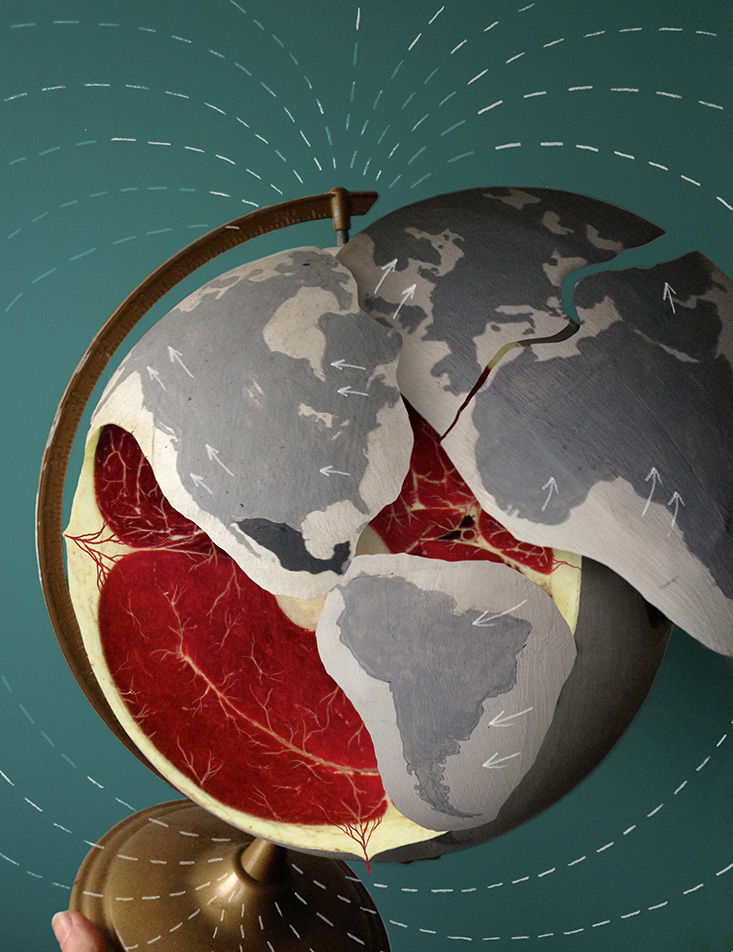# The Interconnection of Life, Plate Tectonics, and Alien Worlds
Written on
Chapter 1: The Gaia Hypothesis and Extraterrestrial Life
The renowned novelist William Golding once suggested to James Lovelock that he should name his well-known hypothesis after Gaia, the Greek goddess of the Earth. This title encapsulates Lovelock's belief that both living organisms and non-living elements on Earth create an interrelated, self-regulating system. His research, which initially emerged from a NASA study published in a 1965 Nature article, focused on identifying potential signs of life on other planets.
Fast forward forty-six years, NASA’s Kepler Space Telescope identified Kepler-22b, one of the earliest confirmed exoplanets orbiting a sun-like star within a habitable zone where liquid water could exist. The presence of liquid water, a necessity for life as we know it, significantly increases the likelihood of life on this planet. Additionally, the planet's estimated density indicates that it could be rocky, suggesting it might replicate Earth-like conditions.
Understanding Plate Tectonics and Life Now, researchers are recognizing the critical role of a planet's dynamic system of plate tectonics in supporting life. On the surface, the link between the complex cycles of life and the slower, more straightforward processes of plate tectonics may seem fragile. However, on Earth, this relationship is both profound and essential.

Earth’s continents shift because they rest on separate tectonic plates, which float like islands atop a molten rock layer. These movements form a vast mechanism that circulates water, carbon dioxide, and other essential elements between the planet's interior, surface, and atmosphere. As noted by Stanford geophysicist Norman Sleep, "the elements on the periodic table are continually being resupplied to the land, lakes, and oceans," which is vital for sustaining life.
Moreover, without plate tectonics, Earth's climate would not be stable enough to nurture life over billions of years. Plate tectonics plays a key role in a primitive planetary thermostat known as the "carbonate-silicate cycle." Here’s how it works: Carbon dioxide in the atmosphere combines with rainwater, forming carbonic acid that erodes silicate rocks. The resulting materials are transported to the oceans, where they are taken up by organisms such as tiny planktonic foraminifera and converted into calcium carbonate shells. Upon their death, these organisms settle at the ocean floor, creating sediments.
At tectonic boundaries, these sediments can descend further through a process called subduction, where one plate slides beneath another. The high temperature and pressure in the Earth's interior release carbon dioxide gas, which eventually returns to the atmosphere via volcanic activity, thus completing the cycle.
The Climate Connection When Earth's temperatures rise, increased evaporation leads to more precipitation, which washes carbon dioxide from the atmosphere into the ground. This, in turn, reduces the greenhouse effect and promotes global cooling. Conversely, when temperatures drop, less carbon dioxide is removed, allowing atmospheric concentrations to rise, enhancing the greenhouse effect and warming the planet. Tilman Spohn, director at the Institute of Planetary Research in Berlin, refers to plate tectonics as "the most efficient known mechanism for recycling" in this context.
Interestingly, life and plate tectonics are interdependent. Scientists now realize that life not only relies on plate tectonics but also stabilizes it. Spohn states, “Life may stabilize plate tectonics, which, in turn, may stabilize the habitability of a planet.”
The Deep Water Cycle and Life An integral aspect of the feedback loop from biology to geology involves the "deep water" cycle, closely linked to weathering. Various life forms contribute to weathering through mechanisms like bacterial acid secretion, which breaks down rocks, and the growth of lichens, moss, and trees. According to Spohn, “The sedimentation rate is a function of the activity of the biosphere,” meaning that a thriving biosphere promotes more weathering.
The sediments produced from this weathering process accumulate on the ocean floor, often containing up to 40% water by weight. During subduction, these sediments are transported down to about 62 miles (100 kilometers) beneath the Earth’s surface. The water trapped in these layers acts as a lubricant, facilitating plate movements by weakening the bonds that hold rocks together, making them more pliable. “Without water in its mantle,” Spohn explains, “a planet wouldn’t have plate tectonics.” This stagnant condition is evident on Mercury and the Moon.
Increasing the water content in rocks also reduces their melting point. Therefore, introducing more water into the mantle leads to more magma formation, resulting in increased volcanic activity. Spohn states, “The outflow of this volcanic rock is essentially the material that forms continental crust,” predominantly granite. Consequently, a vibrant biosphere can enhance the amount of water reaching the mantle, thereby supporting continental growth.

Imagining a Lifeless Earth In 2013, Spohn, Dennis Höning, and two colleagues modeled Earth’s appearance without plate tectonics through computer simulations. They examined two scenarios: one with an active biosphere and another devoid of life. In the “biotic” scenario, biological weathering led to increased sedimentation, resulting in approximately 300 parts per million of water in the mantle, which caused frequent volcanic eruptions and continents covering about 40% of Earth’s surface.
In stark contrast, a lifeless Earth would exhibit drastically different characteristics. Reduced sedimentation would lower water concentrations in the mantle to around 40 parts per million, leading to diminished continental crust production. The model suggested that a barren Earth would resemble a water world with minimal landmass, potentially constituting as little as 3% of its surface.
Spohn summarizes, “We can’t definitively state which came first, plate tectonics or life. However, we can assert that they stabilize each other. If plate tectonics were to cease, it wouldn’t bode well for us. Likewise, if life were to vanish, it would negatively impact plate tectonics.”
Searching for Life Beyond Earth The notion that plate tectonics enhances the likelihood of life is influencing the quest for extraterrestrial organisms. Astronomer Nicolas Cowan of Northwestern University and his team have developed a technique to detect oceans and continents on exoplanets. They have only applied this method to Earth so far, using a telescope on NASA’s Deep Impact spacecraft, which was millions of miles away during its observations. The approach involves observing how a planet's color changes over time as it rotates.
After monitoring Earth for 24 hours with Deep Impact’s small telescope, Cowan’s team created a color map indicating blue for oceans, orange for land, and gray for clouds. Extended observations would reveal the movement of the gray patches (or clouds), allowing scientists to refine their understanding of the distribution of oceans and continents.
This methodology has yet to be applied to distant planets, but Cowan is optimistic it will soon assist astrobiologists in identifying promising exoplanets. “If a planet has extensive continents and large bodies of water, it’s challenging to achieve that without plate tectonics,” he notes. Moreover, plate tectonics are less likely to exist in the absence of life.
References
- Kasting, J.F. & Catling, D. Evolution of a habitable planet. Annual Review of Astronomy and Astrophysics 41, 429–463 (2003).
- Walker, J.C.G., Hays, P.B., & Kasting, J.F. A negative feedback mechanism for the long-term stabilization of Earth’s surface temperature. Journal of Geophysical Research 86, 9776–9782 (1981).
- Höning, D., Hansen-Goos, H., Airo, A., & Spohn, T. Biotic vs. abiotic Earth: A model for mantle hydration and continental coverage. Planetary and Space Science (2013). Retrieved from http://dx.doi.org/10.1016/j.pss.2013.10.004.
- Rosing, M.T., Bird, D.K., Sleep, N.H., Glassley, W., & Albarede, F. The rise of continents — An essay on the geologic consequences of photosynthesis. Palaeogeography, Palaeoclimatology, Palaeoecology 232, 99–113 (2006).
- Steigerwald, B. EPOXI Team Develops New Method to Find Alien Oceans. NASA.gov (2009).
- Cowen, N.B., et al. Alien maps of an ocean-bearing world. The Astrophysical Journal 700, 915–923 (2009).
Steve Nadis is a writer based in Cambridge, Massachusetts, and serves as a contributing editor for Astronomy and Discover magazines. He is also the coauthor of "A History in Sum: 150 Years of Mathematics at Harvard." Originally published at Nautilus on April 10, 2014.